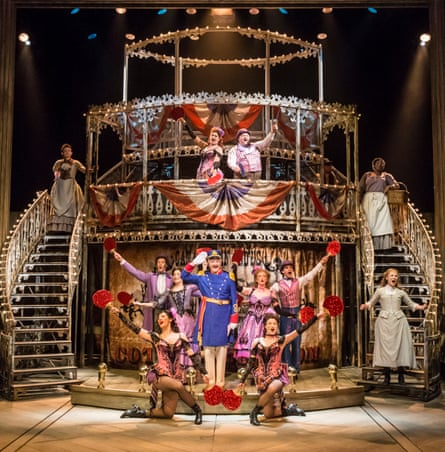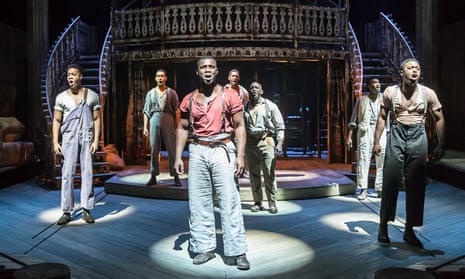What is it about Show Boat? Why is it that a musical written in 1927 still has such a hold on our affections? Watching Daniel Evans’s superlative five-star revival, which has sailed triumphantly from the Sheffield Crucible to the New London theatre, I began to get an answer. Show Boat is a pioneering show that launches the musical into new territory without severing its links to the past.

James Hammerstein, son of the show’s lyricist, Oscar Hammerstein, once said of Show Boat: “It came from nowhere in an era when silly musicals with silly books with silly Mitteleuropean comedians were the rule.” It is absolutely true that Show Boat broke all the rules. It dealt with serious passions. The Jerome Kern songs were propelled by the action. Above all, the show touched on interracial relationships, in the love of a mixed-race woman for a white man, and gave voice to the oppression of African Americans. The show’s most famous number is Ol’ Man River – beautifully rendered by Emmanuel Kojo in this production – in which we get a vivid sense of endless toil and yearning for freedom set against the timeless flow of the Mississippi: the line that haunts me from Hammerstein’s lyrics is “getting no rest till the judgment day”.
Evans’s production, however, goes further than any I remember in incorporating the black characters into the body of the action. Sandra Marvin transforms Queenie, the steamboat’s cook, from a jovial stereotype into a woman of strong purpose who makes it abundantly clear that the seductive number Can’t Help Lovin’ Dat Man springs from her own background before being appropriated by her white employers: when, in Alistair David’s exhilarating choreography, it turns into a big ensemble number, it is Marvin who demonstrates how it should be danced. Evans’s production doesn’t shy away from exposing the bigotry of the American south in the 1880s, where the N-word is routinely used. At the same time, it reinforces Show Boat’s pioneering ability to use a popular form to address racial issues.
But, while Show Boat looks forward, it also embraces the best features of the operetta tradition. It is worth remembering that Kern was of Czech descent on his mother’s side, and began his career by inserting songs into English musical comedies with titles such as The Earl and the Girl, Fascinating Flora and Fluffy Ruffles. Hammerstein, for his part, had written, along with Otto Harbach, book and lyrics for shows such as Rose-Marie and The Desert Song. Show Boat effortlessly transcends the earlier work of its co-creators.

But I would argue that it still acknowledges the operetta inheritance. One particular song, You Are Love, has a lilting romanticism and might have come straight out of Franz Lehár’s The Merry Widow. When Show Boat’s heroine, Magnolia – here deliciously played by Gina Beck – wows a difficult Chicago audience, she sings After the Ball, originally written in 1891 in classic 3/4 waltz time. There are many factors that make Show Boat a great night in the theatre. Not the least of them, however, is Evans’s realisation that this is a musical that joyously looks to the future without wholly eradicating the past.
- Show Boat runs at the New London theatre until 7 January 2017. Box office: 0844-412 4654.

Comments (…)
Sign in or create your Guardian account to join the discussion